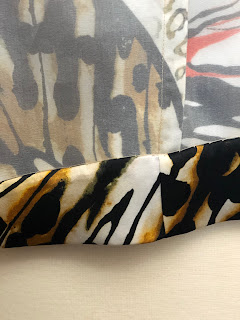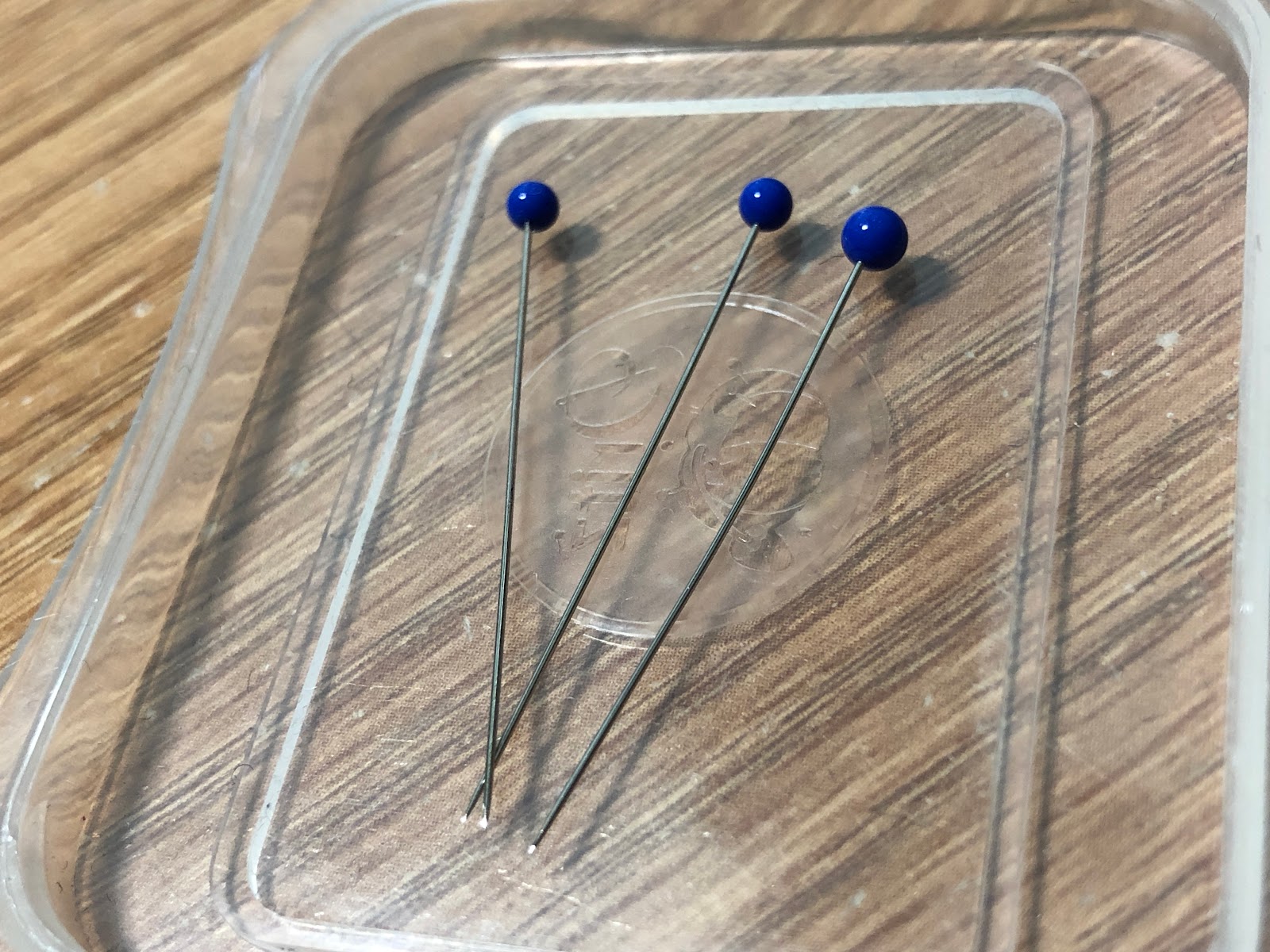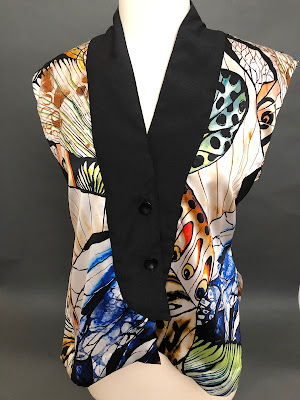In celebration of my milestone birthday this May, I made myself a silk version of one of my favorite designer vintage patterns--Vogue 1693 by Issey Miyake. All my previous versions were sewn using linen. Unlike linen, silk requires some special handling. So I thought I'd share some of the techniques I used in the construction of this special garment!
 |
| OOP Vogue 1693 |
 |
| Silk charmeuse digitally printed panel from Mood Fabrics. |
Fabric cutting.
The goal is to be able to handle silk's slippery nature:
*Stabilize.
*Immobilize.
*Cut. Be it rotary blade or shears, make sure the tools are sharp.
 |
| This Kai (7240AS) shears have micro-serrated blades that really handle all kinds of fabrics very well including silk. A bit pricey but worth the investment. |
Underlining.
Depending on the pattern, one may want to improve the body or drape of a silk fabric and in my case, I did so using silk organza. I followed the same principles to cut my silk organza and immediately hand basted the pieces to the main fabric pieces to minimize distortion with frequent handling.
Fabric prep.
Silk tends to fray a lot so to avoid this, I used overcasting stitches all around the raw edges of each cut fabric, catching the underlining with it. I decided not to use the serger because I thought this would add unnecessary bulk.
Fabric Sewing.
 |
| View of the side seams/lower side facing, all handsewn to the underlining. |
 |
| View of the armhole facing hand sewn to the underlining. |
 |
| View of the hem. For this, I made sure to catch the main fabric when sewing the hem stitches to "anchor" the underlining in place. |














Beautiful blouse. Thanks for sharing. Eileen
ReplyDeleteThanks for stopping by! I appreciate the kind words!
DeleteThis is a delight Maria! Such lovely sewing and you always find the best prints!
ReplyDeleteThanks so much Diane! I always appreciate your kind words!
DeleteSuch a lovely blouse, the fabric is pretty and the pattern is great as well. The blouse looks good on you, the fit is perfect and it suits you well. Great job. Love it.<3
ReplyDeleteThanks so much!
Delete